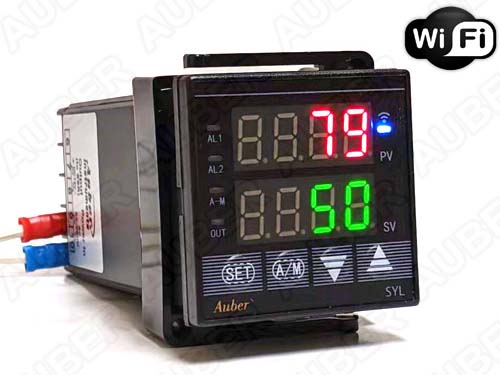Categories
- PID Controllers
- Auto gauges, EGT Boost
- Coffee Machine Kits
- Brew Equipment
- Power Regulators
- Powder Coating Equipment
- Powder Coating Ovens
- Smoker Controllers
- Humidity Controllers
- Plug-n-Play Controllers
- Thermometer, Process Meter
- Temperature Sensors
- SSRs & Contactors
- Timer, Counter, Tachometer
- Pressure Controller
- Controller for Coil Heater Enail
- Enclosures (Boxes)
- Switches
- Punch & Die for Control Panel
- DIN Rail Components
- Connectors
- Accessories
- Control Panels & DIY Kits
- Sous Vide Cooking
- Liquid Dispensing Machine
- Controller For Lab Research
- Silicone Tubing (Platinum Cured)
- Value Packs
- Scratch/Dent/Refurbished
- Services
- Specials ...
- Featured Products ...
- All Products ...
A Brief History of the Liquid Tight RTD Probe
Resistance Temperature Detectors (RTDs) are widely used for measuring the temperature of liquid because of their accuracy and reliability. Prior to the year 2000, most of the platinum RTD sensors were made by wounding platinum wire over a ceramic support. They were large in size, sensitive to the vibration, and expensive (see Figure 1). They were mostly used for industrial applications. In the early 2000s, the thin film platinum (Pt) elements became available. These sensing elements were made by depositing a thin layer of platinum on a ceramic chip. They were smaller in size, insensitive to the vibration, and low in cost. It became feasible to use the thin film platinum RTD elements for prosumer applications such as home beer brewing.
The thermowells and Pt RTD probes made for industrial applications, however, were too big for the tanks and pipes used in home brewing. Some people tried to modify the industrial probes by cutting the probes shorter, but the results were not ideal. The main problem was that there was a strong interference of the ambient temperature to the probe reading. The probe reading inside the tank was usually lower than the actual temperature of the liquid because of the cooling effect from the tank wall. The error between the probe reading and the actual temperature of the liquid was not a fixed value. It increased as the temperature of the liquid increased.
In addition, these industrial probes usually had permanently attached cables, which were not ideal for many home brewers because they need to be stored away when not in use. Cables could be damaged while the equipment being moved around. A detachable probe cable was more desirable.

Figure 1. Traditional RTD probe for industrial liquid tank applications (image from the internet).
In 2007, Auber Instruments, Inc. introduced a series of specially designed Pt100 RTD probes for the home brewing market based on the latest technologies and the requirements from home brewing market. These probes were compact, slim, and high-precision. These probes were named as “Liquid-Tight RTD Probes” because each probe had a mounting base that can be directly installed to tanks or pipes to form a liquid-tight seal without using thermowells. Several threads/fitting options were offered: NPT thread, BSPT thread, straight metric thread, and tri-clamp fittings. These probes can be as short as 1.5 inch (40 mm) and still provide accurate temperature readings. Another main feature of these probes was the detachable cable. The cable can be easily removed from the probe head by pulling a spring-locked connector. A user can detach the cable from the probe head when storing the tank away, protecting the cable from physical damage.
Over the years, we have been continuously improving the quality of our liquid-tight Pt RTD probes based on our customers’ feedback. These probes have become more and more popular in the home brewing community. Some companies started copying our probes after our success. It should be noted that although some of the copies may look similar to Auber’s products, they might not have the same quality or accuracy. Some of the important details and manufacturing processes are overlooked because these copiers don’t understand how the engineering problems were resolved. The corrosion resistance, the fitness of the thread, and reliability of the probe may not be guaranteed. The sensing elements used in those probes may not be as high-quality as ours. Even the cable and connectors could make a difference. Our cables were custom made and the connectors are the best quality on the market. In 2015, we started to engrave the “Auber” logo on each of our liquid-tight Pt RTD probes to make it easy to identify.
Figure 2. Liquid tight RTD sensors & cables offered by Auber instruments (Click to Enlarge).
Last update: 2/17/2022



